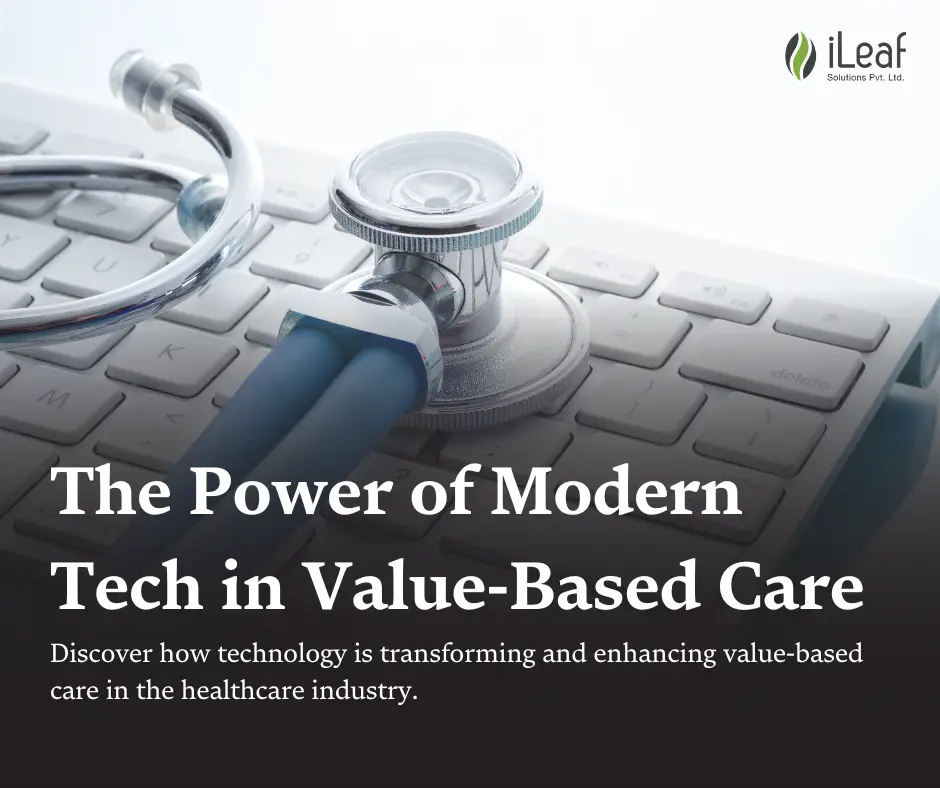Tech-Driven Value: The Power of Modern Tech in Value-Based Care

Overview
- Introduction
- Understanding Value-Based Care
- The Role of Technology in Transforming Value-Based Care
- 1. Digital Health Records (DHRs)
- 2. Telemedicine: Expanding Access to Care
- 3. AI and Machine Learning: Enhancing Decision-Making in Value-Based Care
- 4. Wearable Health Tech and IoT Devices: Empowering Patients in Their Own Care Management Journey
- 5. Intelligent Document Processing (IDP): Streamlining Administrative Workflows for Better Patient Outcomes
- 6.Fraud detection and cybersecurity in Healthcare.
- The Future of Tech-Enabled Value-Based Care Models: A Glimpse Ahead
- Conclusion
Introduction
Healthcare is undergoing a paradigm shift. The traditional fee-for-service model is gradually giving way to value-based care (VBC), a model that emphasizes quality of care over quantity of services. At the heart of this transformation is technology, which is empowering healthcare providers to deliver better patient outcomes while reducing costs. This blog will reflect the intersection of technology and value-based care and precisely how their innovative solution is reshaping healthcare.
Understanding Value-Based Care
Value-based care is one of the growing healthcare delivery models focused on the delivery of high-quality care with controlled costs. Instead of paying providers for each service rendered (fee-for-service), VBC reimburses providers based on patient outcomes and the overall health of a population. This shift in payment models necessitates a corresponding transformation in how care is delivered and managed.
The Role of Technology in Transforming Value-Based Care
Technology is the cornerstone of successful value-based care implementation. By leveraging digital tools and platforms, healthcare organizations can streamline operations, improve patient engagement, and enhance decision-making. Let's delve into some of the key technologies driving this transformation:
1. Digital Health Records (DHRs)
DHRs, or electronic health records, are the foundation of value-based care. These comprehensive digital repositories store patient information, including medical history, medications, allergies, and test results. By centralizing patient data, DHRs facilitate:
- Improved care coordination: Multiple providers can access patient information, ensuring consistent and coordinated care.
- Enhanced decision-making: Clinicians can quickly access relevant data to make informed treatment decisions.
- Reduced medical errors: DHRs help prevent medication errors and other adverse events.
- Population health management: DHRs enable analysis of patient populations to identify trends and target preventive care.
2. Telemedicine: Expanding Access to Care
Telemedicine, or virtual care, has become increasingly prevalent, especially in the wake of the COVID-19 pandemic. By connecting patients with healthcare providers remotely, telemedicine offers several advantages:
3. AI and Machine Learning: Enhancing Decision-Making in Value-Based Care
Artificial intelligence (AI) and machine learning (ML) are revolutionizing healthcare by analyzing vast amounts of data to identify patterns and trends. These technologies can be applied to:
- Predictive analytics: Identify those patients who are at risk to develop certain conditions that allow for early interventions.
- Clinical decision support: Provide recommendations based on evidence-based guidelines and patient-specific data.
- Fraud detection: Detect anomalies in claims data to prevent healthcare fraud.
- Population health management: Analyze patient populations to identify areas for improvement and optimize care delivery.
4. Wearable Health Tech and IoT Devices: Empowering Patients in Their Own Care Management Journey
Wearable devices and Internet of Things (IoT) sensors are transforming how patients manage their health. By collecting real-time data on vital signs, physical activity, and other health metrics, these devices enable:
- Remote patient monitoring: Track patient conditions and intervene early when necessary.
- Personalized care plans: Develop tailored care plans based on individual patient data.
- Patient engagement: Delegate the patients engage in managing their health.
- Population health management: Analyze aggregated data to identify trends and improve population health.
5. Intelligent Document Processing (IDP): Streamlining Administrative Workflows for Better Patient Outcomes
IDP automates the extraction and classification of information from unstructured documents, such as medical records, claims forms, and patient intake forms. This technology helps healthcare organizations:
- Improve efficiency: Reduce manual data entry and processing time.
- Enhance accuracy: Minimize errors in data transcription.
- Increase productivity: Free up staff to focus on patient care.
- Strengthen compliance: Ensure adherence to regulatory requirements.
6. Fraud Detection and Cybersecurity in Healthcare
With the increasing reliance on technology in healthcare, protecting patient data and preventing fraud is paramount. Advanced cybersecurity measures and fraud detection tools are essential to safeguard sensitive information and ensure the integrity of healthcare systems.
The Future of Tech-Enabled Value-Based Care Models: A Glimpse Ahead
The integration of technology into value-based care is still in its early stages. As technology continues to evolve, we can expect to see even more innovative solutions emerge. Some potential future developments include:
- Virtual and augmented reality: Immersive experiences for medical training and patient education.
- Blockchain : This ensures interoperability through secure and transparent data sharing.
- Genomics and precision medicine: individualized treatment based on a patient's genetic makeup.
- Remote surgery and robotics: Expanding access to specialized care and improving surgical outcomes.
By embracing technology and adopting a patient-centric approach, healthcare organizations can successfully navigate the transition to value-based care and deliver superior outcomes for patients.
Conclusion
The future of value-based care in healthcare is bright, with technology playing a pivotal role in driving transformation. As we embrace these emerging trends and innovations, we can expect to see significant improvements in patient outcomes, care efficiency, and overall healthcare quality. By integrating technologies such as blockchain, genomics, telehealth, advanced analytics, and AI, healthcare providers can deliver more personalized, proactive, and effective care.
















